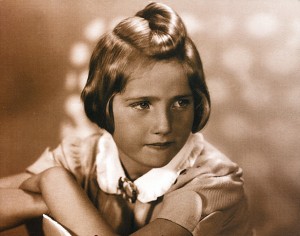EMIL SHER, A Toronto-based playwright, wrote the stage adaptation of Karen Levine’s Hana’s Suitcase. The book tells the story of a Japanese school teacher who embarks on a quest to learn about one particular victim of the Holocaust, a young girl, and in the process educates the students in her class. Jlife caught up with Emil Sher to ask about his play.
1. When did you first hear the story of Hana Brady’s suitcase being discovered at the Holocaust Museum in Tokyo?
Eleven years ago or so, when my daughters would have been twelve and nine, I started hearing about the book from other parents at school. At schools, among parents and faculty, good books have a way of circulating, and I heard almost exclusively good word of mouth. I was also drawn to this book because my mother is a Holocaust survivor, and I’m always looking for material that explores the Holocaust from different angles, including children’s literature.
So when I finally got my hands on the book, it had already developed a reputation that preceded it. I had the good fortune to read it not only as a parent but as a playwright. As I was reading it, the wheels started to turn. I thought, “this could be told so powerfully on stage.” I knew that using the tools of stagecraft, we could do things with this story that just could not be done in any other medium.
I read it over a weekend, and on Monday I called the artistic director of Young People’s Theatre in Toronto. I said, “I just read this book, Hana’s Suitcase, that I think would make a terrific play. Can I come in and talk about it?” And he said, “Well isn’t that a coincidence? We were just talking about Hana’s Suitcase last week as a potential story that we’d like to pursue.” So there was a bit of serendipity right from the start. I ended up auctioning the rights, and I approached the publisher and worked with Young People’s Theatre. I ended up meeting George Brady [Hana’s brother] and had the great privilege and honor of adapting Karen’s book for the stage.
2. When you were reading the book, was there a particular moment or scene that made you realize you needed to write the play?There was one moment, and any parents who read this…it stops them in their tracks. Marketa Brady, George and Hana’s mother, is forced to say goodbye to her children. As a parent, she likely knew that this could be the last time she sees her children. It’s just heartbreaking, both the prospect of being deported and having to kiss your children for what could be the last time.
Every time George talks to school children, the first question they ask him is “where’s the bottle?” And the bottle refers to a moment in the story when Marketa and Hana – when their world is really closing in on them – put all their fears, hopes, and dreams into a bottle and bury the bottle. That was another scene that I thought had great theatrical possibility.
3. Not many Holocaust survivors’ stories begin in Japan. How does the play’s unique setting bring a fresh perspective or inform the narrative?
I think you’ve hit the nail on the head. That’s what drew me to write this play. I often say the words “Holocaust” and “hope” are not often associated for obvious reasons. To me, this is a hopeful story that is, in fact, about the Holocaust, not necessarily a “Holocaust story”. It’s a contemporary story because the protagonist is a Japanese woman. And what I found so profoundly moving and hopeful is how divorced from Hana Brady is from Fumiko Ishioka, the protagonist, around sixty years later. She was born and raised in Japan and was different from Hana is culture, time, by geography, and by religion, and she forged the connection. By giving the story contemporary context we no longer see it as something removed, old and somehow distant, this is the here and now.
“Hana’s Suitcase” will be performed at the Laguna Playhouse May 19-20.
Perry Fein is a contributing writer to Jlife magazine.







